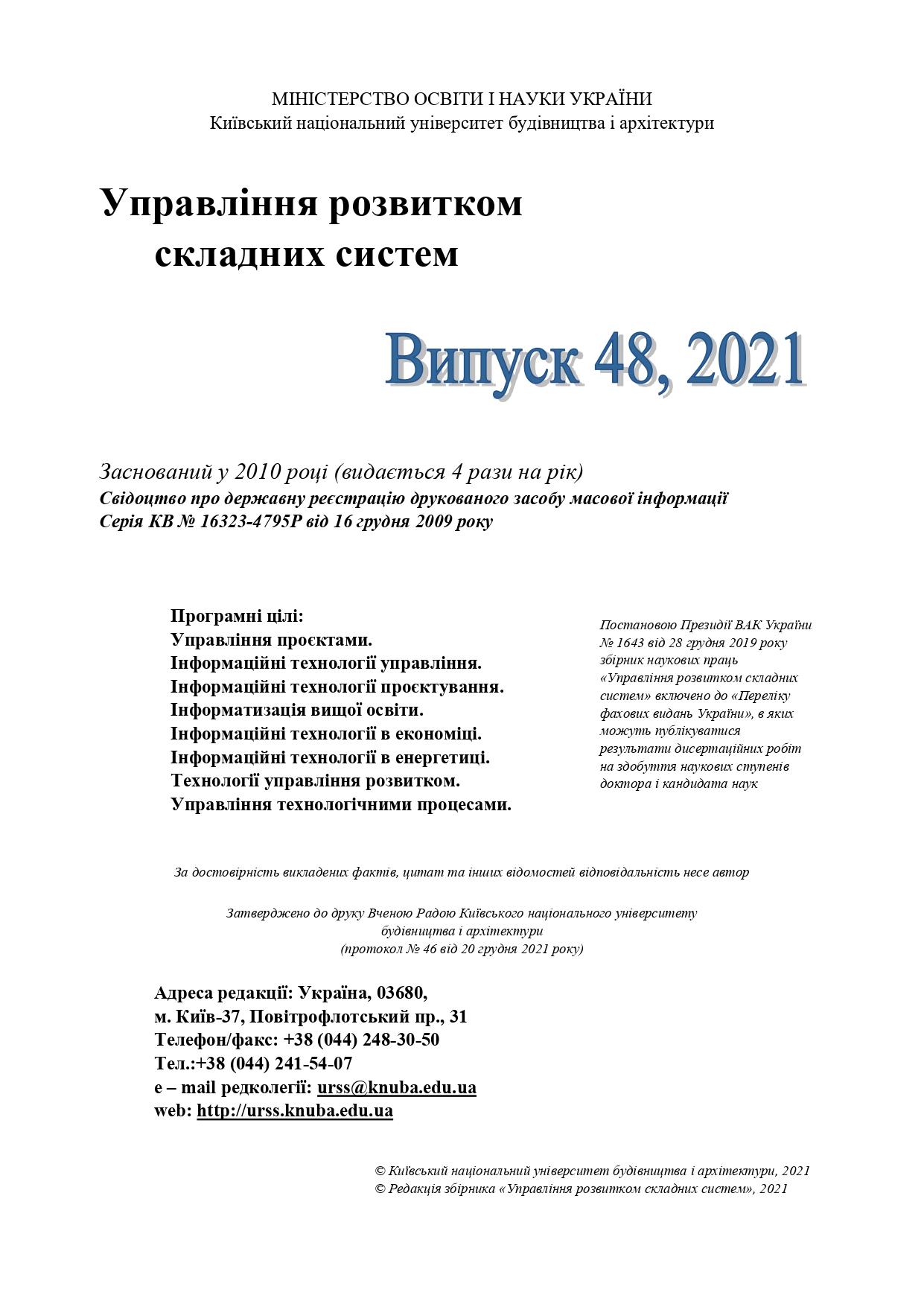DEVELOPMENT OF PHOTOCATALYTIC AND ULTRASONIC EQUIPMENT TO PREVENT THE SPREAD OF CORONAVIRUS SARS-COV-2. PHOTOCATALYTIC SAMPLE OF SEPARATION STAGE
DOI:
https://doi.org/10.32347/2412-9933.2021.48.165-172Ключові слова:
aerosol gradient technologies, separation equipment, gradient field, resource and environmental safetyАнотація
The Full-scale experimental photocatalytic sample of separator consists of 5 equal purification modules. Each of the modules consists of separation elements for increasing of purification level. The equipment is designed for air volume G = 50… 150 m3 / hour, should reduce the degree of microbial contamination of the air to the required level (capture particles of 0.1 μm) and help reduce the risk of airborne diseases. Project considers solving an important scientific and technical problem of creating and development of photocatalytic and ultrasonic heat and mass transfer separation equipment for air clean from dust and viruses (coronavirus SARS-COV-2). Filtration is a quite economical and efficient method of improving air-conditioning system, the air filtration systems represent a good solution for the improvement of Indoor Air Quality (IAQ), and the Antimicrobial treatments (coronavirus SARS-COV-2 prevention) of filters may be a solution to these problems. It is possible to prevent the accumulation and dispersion of microorganisms by adding anti-microbial agents on the surfaces of filter, which contributes to the improvement of air quality. Purification from dust and viruses and liquid media smaller than 1 μm requires development of air-purifying separation equipment able to capture particles of this size with implementation of resource-saving features base on photocatalytic and ultrasonic equipment. Development of photocatalytic and ultrasonic heat and mass transfer separation equipment for air clean from dust and viruses (coronavirus SARS-COV-2 prevention) is based on multilevel gradient aerosol technologies, as well as research of methods of their control, is their joint use in the presence of substantial gradients of the hydrodynamic and thermophysical parameters (temperature, pressure, velocity, density, etc.).
Посилання
Kalvert, S., Inglund, G. M. (1988). Atmosphere protection from industrial pollution: reference book, part 1. Moscow, Metallurgiya Publ., 760.
Kalvert, S., Inglund, G. M. (1988). Atmosphere protection from industrial pollution: reference book, part 2. Moscow, Metallurgiya Publ., 770.
Sazhin, T. M., Krechun, K. N., Botez, N. (2003). NOx and SO2 retention out of flue gases in electric fields. International applied scientific journal, 4, 193–196.
Straus, V. (1981). Industrial gas cleaning. Moscow, Khimiya Publ., 583.
Hall, D. E., King, D. B., Morgan, T. B. (1998). A review of recent literature investigating of the measurement of automotive particulate; the relationship with environment aerosol, air quality and health effect. Ibid, 982602, 53–65.
Ryzhkov, S. S. (2001). Ship complex installation of clearing oil mixture of water. Proceedings of the third international conference on marine industry, Varna, 2, pp. 285–288.
##submission.downloads##
Опубліковано
Як цитувати
Номер
Розділ
Ліцензія
Авторське право (c) 2021 Chun Xiang Huang, Xia Liling , Sergiy Ryzhkov

Ця робота ліцензується відповідно до Creative Commons Attribution-NonCommercial-NoDerivatives 4.0 International License.

